Languages at Dartmouth
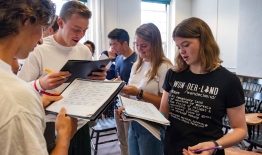
Some cultures, ideas, or moments in history are so inextricably linked to their context that they must be explored and shared within it. Language learning at Dartmouth happens in many ways (and in many places), but all of them give students a new lens on the world, the way they study it, or both.
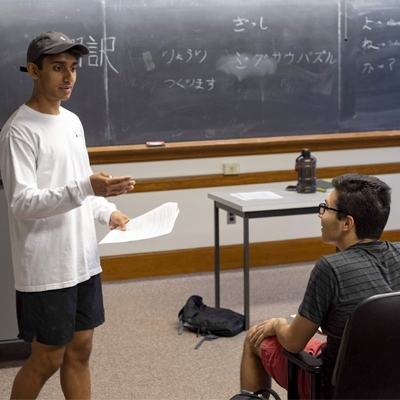
Explore languages as a major, minor, or part of another program of study:
-
Arabic
-
Chinese (m)
-
French (M/m)
-
German Studies (M/m)
-
Greek
-
Hebrew
-
Italian (M/m)
-
Japanese (m)
-
Korean
-
Latin
-
Portuguese (m)
-
Russian (M/m)
-
Spanish (M/m)
-
Ukrainian
Key: M= Major, m = Minor. Learn more about Dartmouth's language requirement and the many ways students can complete it here.
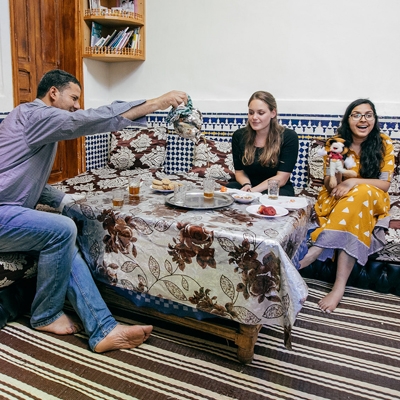
The Language Study Abroad (LSA) and Advanced Language Study Abroad (LSA+) programs have been developed in response to the College's commitment of understanding, and communication with people of other cultures. To this end, Dartmouth maintains programs in a number of countries. Undergraduates live with local families on most LSA and LSA+ programs. Life with local families gives students a personal context through which they gain access to the culture as a whole. Studying the language, literature, and civilization gives them an intellectual grasp of historical and contemporary cultural patterns. Browse the LSA and LSA+ programs offered at Dartmouth.
Learning Languages at Dartmouth
Dive deeper into the student experience with foreign languages at Dartmouth by exploring stories and profiles from our admissions magazine, 3D.
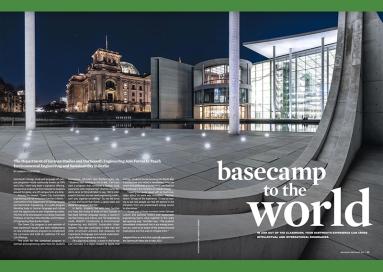
Green City, Sustainable Engineering and Full-Immersion German in Berlin
German Studies and Dartmouth Engineering Join Forces
In this first-of-its-kind program, students live with host families in Berlin, have the choice of three of four German courses and two engineering courses. They participate in field trips and other enrichment activities that showcase the importance of language and cultural understanding to effective engineering solutions.
Read More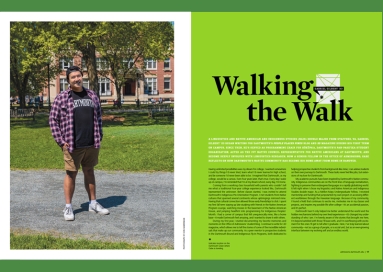
Gabe ’23: Unlimited Possibilities
LINGUISTICS AND NATIVE AMERICAN AND INDIGENOUS STUDIES (NAIS) DOUBLE MAJOR
"Indigenous communities are on the front lines of language revitalization, fighting to preserve their endangered languages in a rapidly globalizing world. It felt right when I chose my linguistics and Native American and Indigenous Studies double major."
Read More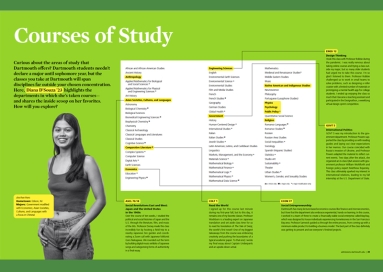
Diana '23: Pushing The Boundaries
Government modified with Economics; Asian Societies, Cultures, and Languages with a focus in Chinese
"Professor Washburn is a leading expert on Japanese translation and set aside class time for us to read his translation of The Tale of Genji, the world’s first novel! To this day, it remains one of my favorite classes."
Read More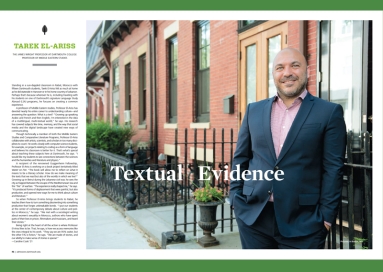
Professor El-Ariss: Creating Common Experience
THE JAMES WRIGHT PROFESSOR AT DARTMOUTH COLLEGE PROFESSOR OF MIDDLE EASTERN STUDIES
Professor Tarek El-Ariss collaborates with artists, scientists, and scholars in too many disciplines to count. That’s what’s special about teaching here at Dartmouth, he says. “I would like my students to see connections between the sciences and the humanities and literature and physics.”
Read More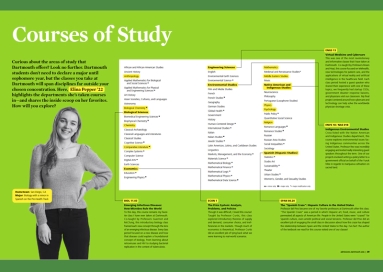
Elina '22: Engaging Class
Biology with a minor in Spanish on the Pre-Health Track
"Professor del Pino did an excellent job of engaging the small class in discussion about how 'The Spanish Craze' has shaped the relationship between Spain and the U.S. to this day. Fun fact: the author of the textbook we read for this course visited one of our classes!"
Read MoreFeatured on our Blog

Find out what classes I'm taking this term, and how these fit into my plans and my Dartmouth journey as a whole.


Dartmouth is such a tight-knit community that it has its own lingo. Here is your very own Dartmouth Dictionary!


You have questions about the foreign language requirement at Dartmouth? Read on. I've got answers.


The Green City Program in Berlin has four course options! This is an account of my experiences with the classes I took, hoping to help anyone considering the program.


At Dartmouth, there is an undergraduate requirement for language; after all, it is the liberal arts! Fulfilling this requirement looks different for various people and I will focus on my experience.


The beginning of my adventures in Berlin and my first impressions of the city I will be living in for the next three months!



As I immerse myself in the French way of life, I look forward to sharing my experiences with you, avid readers of People Places Pines!


I can now officially say that I am doing my first study abroad in Toulouse, France! J'aime déjà cette ville!

